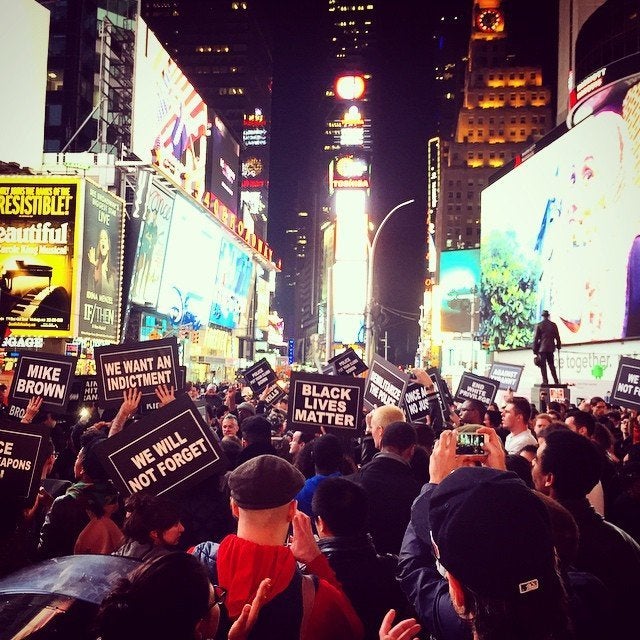
ST. LOUIS -- On Friday night, police and protesters clashed outside Busch Stadium. A Black Lives Matter demonstration involving a few dozen activists led to eight arrests, two of which included the use of stun guns by the St. Louis Metropolitan Police Department’s bike patrol unit, according to police.
Among those hit was a newly elected school board director from a St. Louis suburb, who said she was stunned more than once.
During the hours-long protest on the night of a Cardinals game, the activists had walked into traffic on more than one occasion. Police said they were impeding the flow of traffic and were told to move to the sidewalk several times before arrests were made.
But cellphone video footage shows that stun guns were used on demonstrators who were on the sidewalk at the time.
St. Louis Police Chief Sam Dotson said Sunday that demonstrators were “endangering lives.”
“The public has a tremendous amount of tolerance, but at some point when people’s lives are put at risk, and that night protesters and the motoring public were put at risk, I think they expect their police department to do something,” Dotson said during a televised interview with the local Fox station.
Kristine Hendrix, director of the University City, Missouri, school board, posted on Facebook that she was peacefully protesting when she and other activists were “ambushed by the St. Louis PD.”
A cellphone video shows Hendrix walking along the sidewalk before police used force. The video captures an audible clicking sound followed by Hendrix screaming in distress. An officer then tells Hendrix to put her hands behind her back, to which she responds, “I can’t. It hurts.”
“I was the woman tased repeatedly by an officer. I will not post the video due to the trauma I experience reliving it,” Hendrix wrote on Facebook.
She was arrested for impeding the flow of traffic and resisting arrest, and has since been released on bail.
Under the St. Louis police department's use-of-force policy, a stun gun can be used if an officer reasonably believes he or she will become engaged in a violent encounter. The department said it is conducting an internal investigation into Friday's incident to “ensure all department policies and procedures were adhered to during the arrests as well as examine the events leading up to the arrests.”
Bryan Sutter, a 29-year-old freelance photographer, said he was arrested and released after three hours without charges.
“It was a cowboy action. [St. Louis police] have a history to hang back, and whenever everyone goes home, they make five or six arrests,” Sutter told The Huffington Post.
According to Sutter, the demonstration was calm. ”It felt like it wasn’t a big enough disturbance to warrant the police’s excessive involvement,” he said.
More broadly, he fears that police reform will slow down now that much of the national media have moved on to other stories.
“If this was in March, CNN would’ve been right there. Once the national spotlight [moves] on, it stops the growth and change. This is still an ongoing process. There’s still lots of attention and changes that need to happen,” Sutter said.
Law enforcement's use of Tasers and other stun guns has drawn criticism from police critics far beyond St. Louis. In 2012, Amnesty International reported that some 500 Americans died from Tasers from 2001 to early 2012. That same year, an Indiana University Department of Medicine professor published an analysis of stun gun use in which he concluded that the devices can trigger cardiac arrest.
On Sunday morning, a 50-year-old former Marine died in Rochester, New York, after a police officer hit him with a stun gun.

